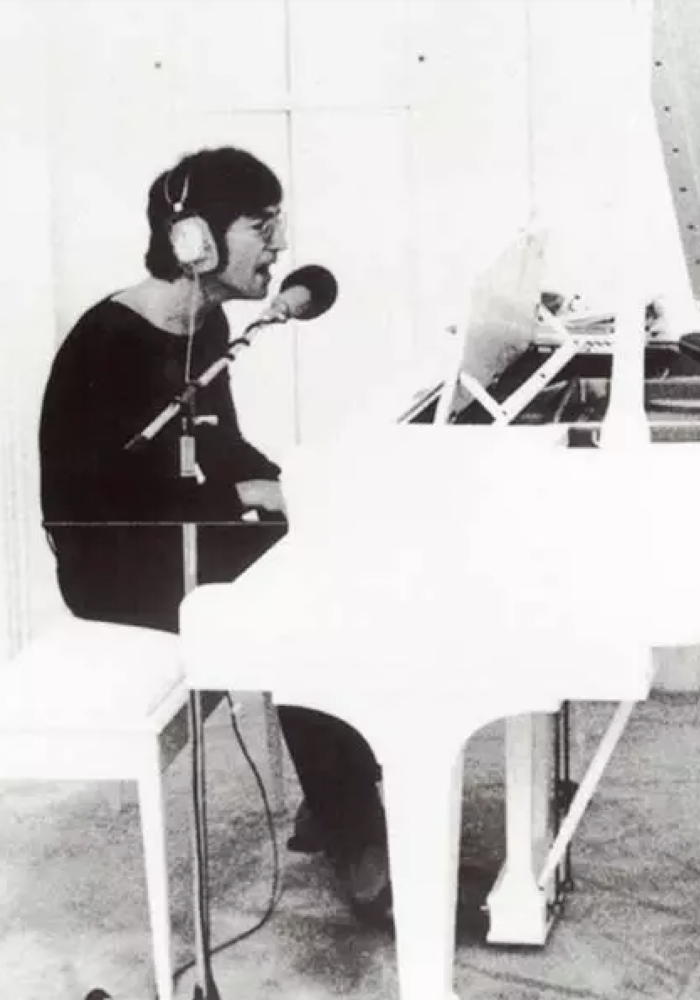It is arguable – or perhaps inarguable? - that no other record released in the past half a century has attained anything close to the iconic status of John Lennon’s Imagine. Everything from the single of the same name and the accompanying video of John and Yoko sat at that famous white piano, through to the record’s ethereal, washed-out sleeve featuring the face of an expressionless John cross-faded with clouds and a blank sky are instantly recognisable.
Similar sentiments could of course be applied to many of Lennon and the other Beatles’ releases (together and solo), yet the ubiquity of the album, and indeed that title track, have in many ways elevated the record beyond mere music and pop culture, almost as if it has been stitched into the very fabric of human consciousness. It’s a realm that very few works of art are ever able to reach.
However, prior to its release, few could have predicted the kind of cultural impact Imagine would go on to have, given the nature of its predecessor, Lennon’s 1970 debut solo offering John Lennon/Plastic Ono Band. A wonderfully mixed and at times challenging collection, it was an album of extremes.
Deeply personal moments like Mother, Well, Well, Well, God and My Mummy’s Dead made for visceral and occasionally uncomfortable listening, not least because of Lennon’s exploration of primal scream therapy, which he incorporated in numerous tracks.
But it also provided a few nods to some of the more delicate moments that would arrive on its follow-up by way of tracks such as Working Class Hero, Love and Look At Me. What it didn’t possess was a bona fide hit…
So where else to start when assessing Imagine’s legacy 50 years on than with its title track. It’s a song that has become so ever-present, so revered, and so poignant in the minds of millions that it’s difficult to assess it purely on musical terms, with countless fans the world over holding it dear as a unifying message of peace, love and anti-consumerism.
Infinite essays could be written on what it is about the song that appeals so profoundly to so many, and it’s unlikely we’d be any closer to grasping an answer. Yet whatever the reason, those simple opening notes will almost certainly resonate in the same way another 50 years on from today.
That said, it has also prompted equally strong yet somewhat less fond responses from others down the years, for whom it represents little more than a preachy, saccharine missive from a multi-millionaire pop star.
A recent example of its unique ability to divide opinion came during the onset of the pandemic, when in March 2020, actor Gal Gadot and a raft of A-list Hollywood stars came together to spread good vibes all round with their very own rendition of the song. The backlash received was something to behold, and a quick Google of ‘Gal Gadot Imagine’ will give you some idea of the response should you have somehow missed it at the time…
Crucially, Imagine the album is about so much more than just Imagine the song. Not only did it spawn another legendary Lennon solo single in the form of the crushingly confessional Jealous Guy, it also produced some of the most celebrated and influential tracks in the Lennon canon.
In I Don’t Wanna Be A Soldier Mama, Lennon created one of his most explicit anti-war statements over a track whose hypnotic mantra and rambling beat would make for one of his most remarkable pieces of music, while the anthemic Gimme Some Truth provided a classic piece of quintessentially Lennon anti-establishment, socio-political commentary.
As with much of the solo material that would follow over the next nine years, Yoko Ono and The Beatles were never far from the fore on Imagine. How Do You Sleep?, at least on the surface, appeared to take aim at his former songwriting partner, referencing Sgt. Pepper and Yesterday and the “muzak” he was making at the time. Meanwhile, album closer Oh Yoko! delivered one of the most overtly joyous love songs he would ever commit to tape.
Recorded between London’s Abbey Road, Berkshire’s Ascot Sound and New York’s Record Plant and co-produced by Lennon, Ono and Phil Spector, Imagine was an instant success both critically and commercially, receiving positive reviews across the board and peaking at No.1 on both the UK Albums Chart and the US Billboard 200.
Today, its stock remains lofty as ever. While the single has, and always will, retain a life of its own, Imagine the album remains one of the most influential records in rock history. While there is plenty to admire and appreciate in each of Lennon’s post-Beatles records, it’s hard to make a case for any other encapsulating the essence of what made him such a special artists in quite the same way.
Love, hate, the personal and the political, it’s all there, laid bare across 10 tracks, in Lennon’s unflinching, inimitable style. And we’ll likely never see another record like it.



